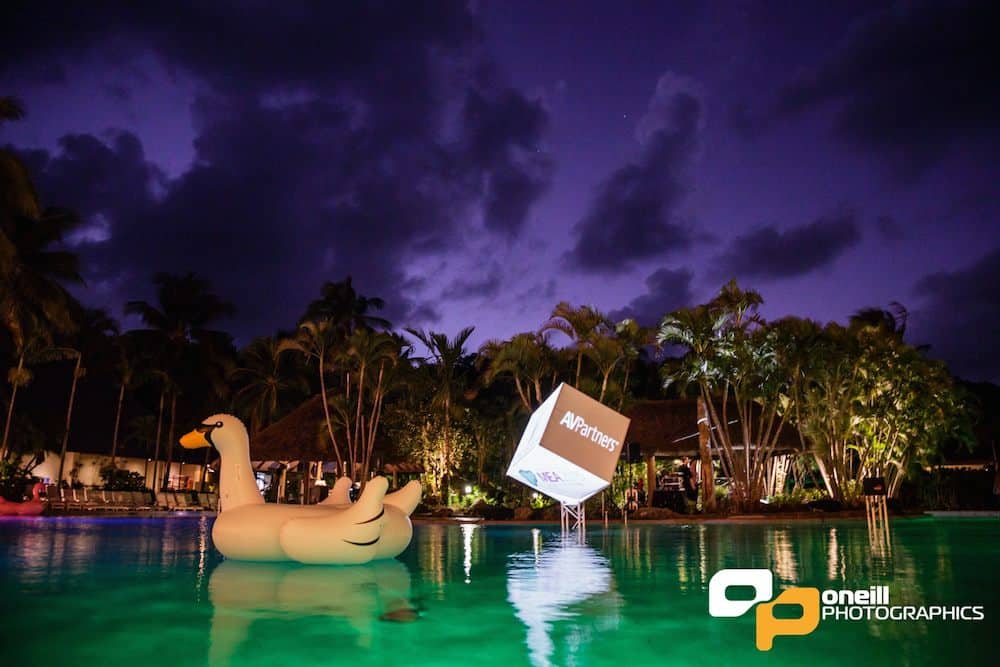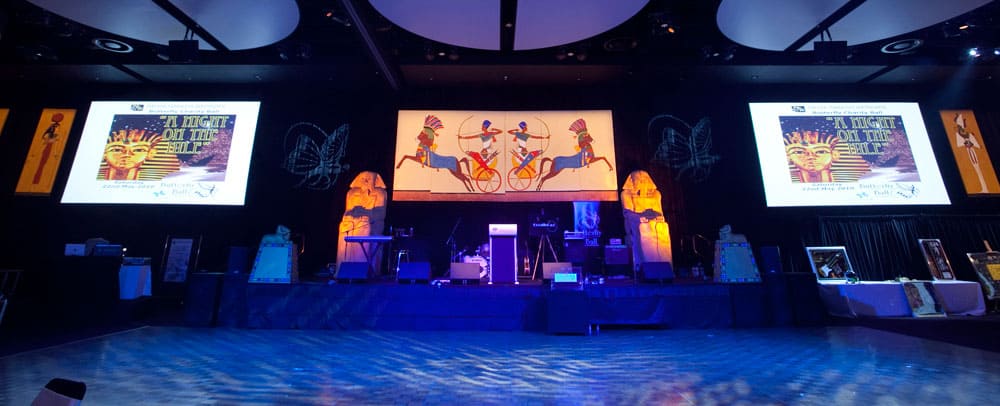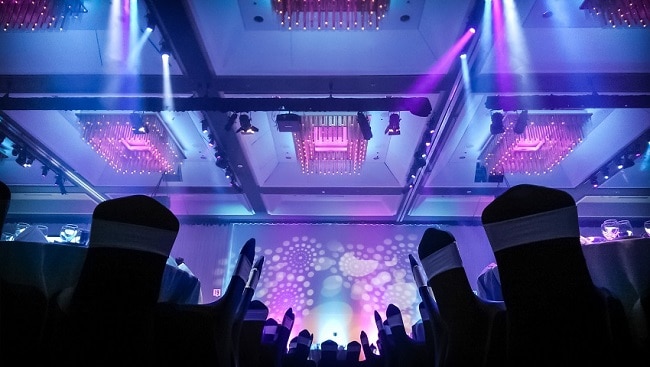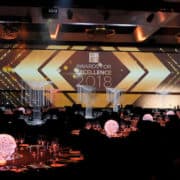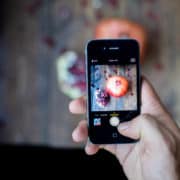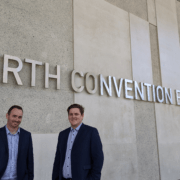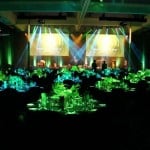What is projection mapping?
Projection mapping is transforming event styling to create some truly unique and transfixing event experiences.
The projection technology has gained prominence through the Vivid festival in Sydney where buildings are transformed into public art installations, though the process also has application on a smaller scale.
Using specialised software and high-powered computers to turn objects or structures into a display surface for projected videos, projection mapping brings objects to life and turns them into illuminated and interactive displays.
Projection mapping works by modifying – pixel by pixel – the projected video to fit the surface and space. The image will then mask and change the look of whatever you are projecting onto, making existing features “pop” or completely overlaying them to create a new, virtual object.
Projection mapping is used to add extra dimension and movement to stationary objects. The displays are commonly combined with audio to create an audiovisual narrative.
Projection mapping works on most surfaces including buildings, cars, walls, stages and furniture. At Hamilton Island we have projected onto a 3D cube suspended over the pool, created a 4m tall ‘talking’ truck (which MC’d the event!), projected onto the entire surface of a suspended sphere and turned the entire foyer balcony into a projection screen. The options are limitless!
Offering a diverse range of styling opportunities, projection mapping is a great solution for all events including trade show presentations, conferences and live concerts.
Projection mapping can offer a cost-effective and creative way to transform any event space. The visual impact of projection mapping goes beyond ordinary video projection to deliver an unforgettable experience.
This article originally appeared at Business Event News.
